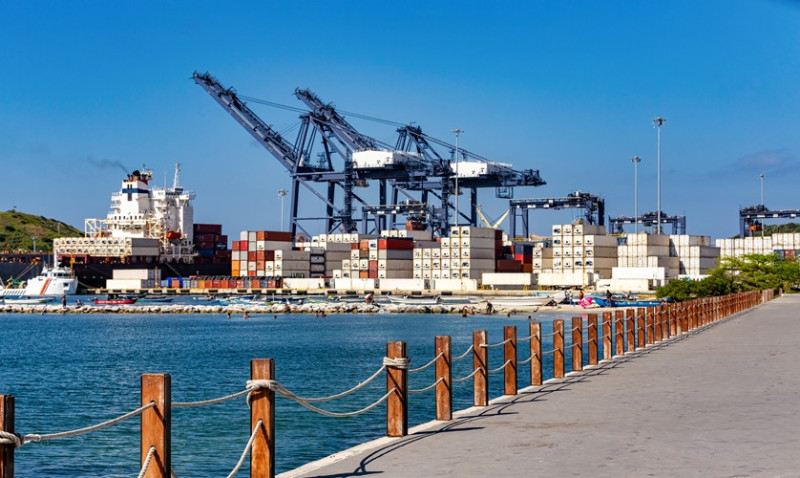
With the rise of global e-commerce and access to affordable products overseas, many individuals and professionals in the UK are turning to China as a primary source for furniture, lighting, tools, and other interior design essentials. Whether you're a DIY enthusiast redecorating your flat, a tradesperson sourcing bathroom fixtures, or an architect managing a large renovation project, importing from China can be a smart move — but the import process involves careful planning, especially around customs duty and VAT.
This blog post breaks down exactly how customs charges work and how to calculate the duty and VAT you’ll need to pay when shipping goods from China. We’ll walk through the steps in simple terms and show you everything you need to know to avoid hidden costs and import delays.
What Are Customs Duty and VAT?
Before you import any goods into the UK, it's important to understand the two main charges applied to international imports: customs duty and VAT.
Customs Duty is a tax imposed on goods being brought into the UK from countries outside the UK (such as China). It is calculated based on the value of the goods and the product type (commodity code). This charge is used to protect UK industries and regulate trade.
Import VAT (Value Added Tax) is like the regular VAT you pay in shops — currently 20% in the UK. When goods are imported, VAT is charged on the total value of the item, shipping, insurance and customs duty combined.
Both customs duty and VAT must usually be paid before you can receive your goods. Failing to accurately calculate and pay these charges could result in delays or extra costs down the line.
How Do You Calculate Customs Duty?
Customs duty in the UK is usually a percentage of the product's value. However, not all products are charged the same rate. The duty rate varies depending on what category the item falls into, which is determined by its commodity code.
You can find any product’s commodity code and duty rates using the HMRC Trade Tariff tool. Here are the basic steps:
- Identify the product being imported (e.g., LED ceiling light, kitchen tap, ceramic tile).
- Look it up on the UK Trade Tariff website to find the correct commodity code.
- Check the “third country duty” rate (usually the rate for countries outside the UK and EU, such as China).
Most homegoods, such as lighting or hardware, have duty rates between 2% and 8%. However, some items could be duty-free or have special rules. It’s essential to check to avoid surprises.
How Is VAT Calculated on Imports?
Once the customs duty has been calculated, VAT is then calculated on top of that. VAT is charged at the UK standard rate of 20% on the total value of:
- The goods
- Shipping costs
- Insurance
- Any customs duty owed
This means if you import a £500 piece of furniture from China, with £120 in shipping and insurance, and the customs duty is £40, your VAT would be calculated on £660 — which equals £132 of VAT.
Here’s a summary of how the calculation works:
| Cost Element | Example Amount (£) |
|---|---|
| Product value (invoice price) | 500 |
| Shipping & insurance | 120 |
| Customs Duty (e.g. 5%) | 25 |
| Total import value | 645 |
| VAT (20% of £645) | 129 |
| Total Taxes Due (Duty + VAT) | £154 |
So, in this example, although you paid £500 for the item, you’d actually pay an additional £154 in taxes to receive your goods. Planning for this upfront is essential when working within a tight renovation or build budget.
How and When Are These Charges Paid?
If you’re using a courier or freight forwarder (like UPS, DHL, DPD or sea cargo company), they will usually pay the customs charges on your behalf and invoice you before the goods are delivered. For larger shipments coming through ports, you may need to work with a customs broker to clear your items through HMRC.
You’ll receive a “C88” or “Entry Acceptance Advice” document that shows the exact duties and VAT calculated. Keep these documents, especially if your business plans to reclaim VAT later.
What If I’m Importing Goods for Business Purposes?
If you’re a VAT-registered business in the UK — for example, an interior designer or construction contractor — you can typically reclaim the VAT paid through your VAT returns. However, customs duty is not reclaimable, so that should be factored into your cost of goods.
For business importers, HMRC introduced Postponed VAT Accounting (PVA), allowing you to defer VAT payment and account for it on your VAT return, rather than paying it upfront. This dramatically improves cash flow for small businesses that regularly import goods.
Make sure your EORI number is active and linked to your VAT registration if you plan to use this system.
Can I Avoid Paying VAT or Duty?
Technically no — but there are some legal ways to minimise costs:
- Low value items: Goods with a value of under £135 (excluding shipping) may be exempt from duty but VAT still applies in most cases.
- Free Trade Agreements: If your product qualifies under a trade agreement (not common for China), duty could be reduced.
- Split shipments: Sometimes importers split orders into multiple deliveries to stay under £135 per shipment to reduce duty — however, HMRC may combine invoices and treat it as avoidance if abused.
It’s best to remain compliant with import regulations to avoid penalties or confiscation of goods.
Tips for a Smooth Import Process
To ensure your goods arrive smoothly and within budget:
- Always request a commercial invoice from your supplier with accurate product descriptions and declared values.
- Check whether the supplier’s shipping terms include delivery, tax and customs handling (commonly known as DDP).
- Use a customs broker or freight forwarder if you’re new to importing.
- Keep all records, including shipping documents, proof of payment and HMRC declarations.
Proper planning means fewer surprises and more confidence — especially when dealing with higher-value, time-sensitive projects for clients or your own home renovations.
Get Help With Your Next Import
If you're thinking about sourcing products from China for your next design or renovation project and unsure about the import process, we’re here to help. Our team assists tradespeople, architects, and home owners with sourcing, shipping, and customs clearance to make importing stress-free and transparent.
Reach out to us today and we’ll help you calculate exact costs, find reliable suppliers, and ensure you get your goods delivered on time and on budget.
Importing from China doesn’t have to be overwhelming — with the right approach, it's a powerful way to access quality, affordable materials and products for your next UK project.





